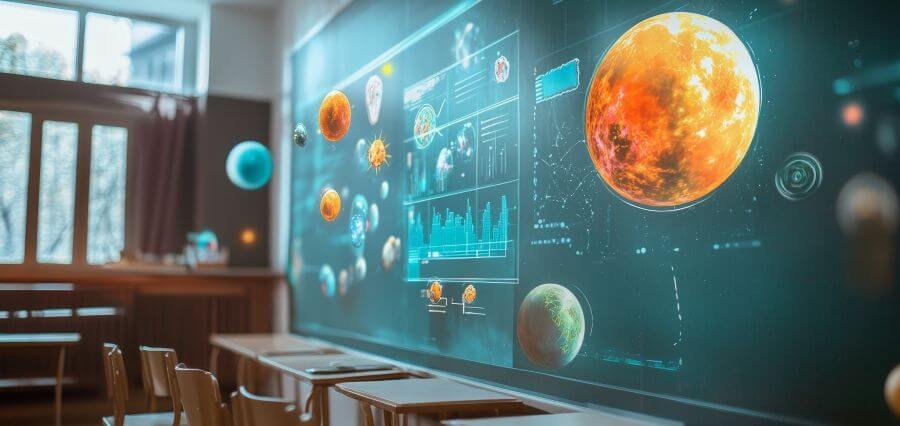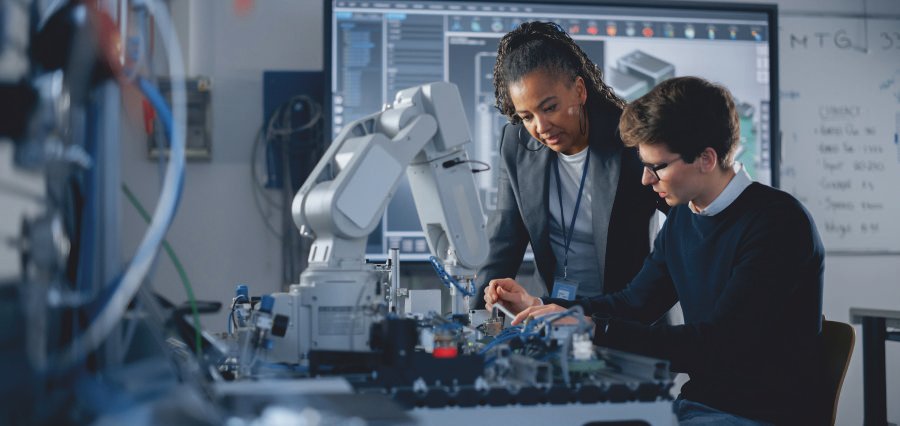Education can benefit greatly from augmented reality (AR), which can help students grasp difficult topics and make learning more dynamic and interesting. AR can infuse pedagogical processes with creativity and innovation, substituting more inventive pedagogies for outmoded teaching methods. may encourage diversity by offering many ways for pupils to engage with the material, guaranteeing that every student can take part. With AR, an online learning environment can be developed where students can work together in real time with teachers and other students. Students can better relate their theoretical knowledge to practical situations by using AR. Augmented reality in the classroom is currently transforming the way that knowledge is imparted and acquired.
Identifying the Innovative Augmented Reality Apps for Classroom Learning
AR has rapidly evolved into an entertaining tool for bringing subjects to life in schools and other settings. AR is transforming conventional teaching methods by introducing virtual field trips in history classes, 3D models in biology classes, and more.
However, the market for AR education is still in its infancy and is expected to grow rapidly, offering both instructors and students a plethora of opportunities. Let’s examine the top augmented reality apps that are transforming education over the next 12 to 24 months, providing distinctive perspectives and learning opportunities across several domains.
1) Seek by iNaturalist: Connecting with Nature
One of the most advanced applications for augmented reality in the classroom, the students can use the AR software iNaturalist’s Seek to instantly identify plants and animals using the cameras on their smartphones. With the help of this biology-focused software, kids may discover animals, engage with their natural surroundings, and get firsthand knowledge of ecosystems. Students learn about the area wildlife and plants. discusses sustainable connections with nature to raise awareness of environmental issues. It can offer real-time identification during treks and field trips.
2) Anatomy 4D: Human Body Closer look
Anatomy 4D, which shows the human anatomy in an interactive manner, can improve medical and health research. Students studying biology and anatomy particularly like being able to examine intricate 3D pictures of muscles, organs, and other bodily systems. This program of augmented reality in classroom, which is well-known in the field of medical studies, aids medical students in visualizing human anatomy. It teaches high school pupils about the operations of the body in a natural way. Anatomy 4D allows for autonomous study and is jam-packed with captivating pictures.
3) CoSpaces Edu: 3D Creation for Any Subject
CoSpaces Edu is an excellent software for us to use as a whole class exercise in a variety of disciplines, including but not limited to history, arithmetic, and literature, because of its emphasis on 3D games, creation, and interactive tales. Students can teach visual topics like architectural design and narrative plot through the app’s ability to incorporate teachings into lessons. Improved with sophisticated coding abilities, it instructs pupils in block-based or script-based coding. By using creativity or bread-powered electronics, it encourages the study of topics like history and culture.
4) Froggipedia: Biology Learning through AR
As an addition to the watershed’s villages, Froggipedia allows children to visually dissect and examine a frog’s anatomy. Froggipedia, which is intended especially for biology students, provides information about the anatomy of amphibians without requiring actual specimens. This application of augmented reality in the classroom, is a fantastic substitute for budget-conscious colleges or for students who are uncomfortable with the dissection procedure. It makes it possible to study anatomy and physiology without the need for physical specimens when studying courses like biology. The internal organs’ AR viewpoints facilitate ethical learning and do away with the need to dissect living frogs. It aids students in closely examining the organs and parts.
5) Assemblr EDU: Building AR Content with Ease
Teachers and students can utilize Assemblr EDU to learn more subjects and develop their own AR curriculum by using their creativity. With an easy-to-use interface, users may create 3D models related to math and art. With the augmented reality in the classroom, the students may take charge of their education by delving further into the topics they are interested in. enables students to create presentations in 3D or augmented reality, which enhances the class assignments. It encourages the early adoption of AR in art and design programs. Students can reenact historical sites or artifacts with assistance.
6) JigSpace: Practical 3d learning
The JigSpace library gathers interactive 3D “Jigs” that teach kids about everything from the components of a cell to how an automobile engine operates. This app which interestingly brings the augmented reality in the classroom, helps students better grasp technical concepts by demystifying difficult material and providing them with easily understood images. It aids students in visualizing mechanical components and procedures in engineering and mechanics applications. JigSpace improves biology and chemistry education by displaying the intricate intricacies of a cell’s or molecule’s structure. Using 3D interactive models to learn about common appliances or tools improves practical abilities.
Fostering Holistic Learning through Augmented Reality in the Classroom
The modern technologies including augmented reality in the classroom, have given a wider perspective to the learning process making it specific, identifiable and detailed. Students get a clear picture of the facts of the subjects in a realistic and confirmatory manner. The best part of the augmented reality in the classroom is that it helps in better learning of the concepts and principles in a fusion of theoretical and practical aspects.









